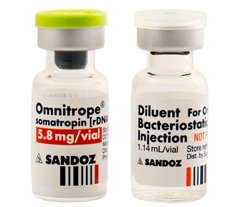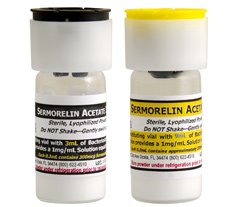Medication for Low Testosterone – Know Your Options

When it comes to medication for low testosterone, know your options before making a decision. Men, especially, have to discuss this situation with an experienced physician – typically a doctor specializing in hormone replacement therapy. The reason for this is that there are many forms of testosterone therapy, and all may not be right depending on the level of severity of Low T, and the individual’s personal needs.
The use of bioidentical hormone medications for low testosterone treatment has made this therapy extremely safe and effective for the majority of individuals needing it. In fact, testosterone replacement therapy for women is often considered safe for females who cannot take estrogen replacement due to certain health situations.
When the HRT specialist offers prescribed medication for low testosterone, it is only after a careful review of blood test results and physical examination findings. Only when there is a clear determination that lower testosterone levels are the cause for any symptoms will testosterone replacement therapy be prescribed.
Options for Low Testosterone Treatment
Many common medications for low testosterone treatment exist today, thanks to scientific research in this field. TRT has been in use for many decades, and the results are often said to be life-changing for many people. From better performance on the job to improved interpersonal relationships with one’s spouse, children, extended family, and friends, not to mention improved personal image and emotions, the transformation is extensive.
Here is a detailed list of approved forms of medication for low testosterone levels:
- Testosterone Injections – this option is used mainly for men, but sometimes also for the treatment of particular types of breast cancer in women. The dosage contained in testosterone injections is typically too high for women whose bodies need lower dose treatment.
- Testosterone Cypionate – the number one choice when it comes to testosterone therapy for men. Most males administer testosterone cypionate once every two weeks, and the cost is lower than with any other form of testosterone replacement therapy.
- Testosterone Enanthate – this runner-up to cypionate is a little more expensive, and requires more frequent injections (typically once every 7 to 10 days).
- Testosterone Propionate – due to a higher degree of side effects, extremely frequent shots, and excessive cost, this form of testosterone injection is rarely used.
- Testosterone Undecanoate – the latest form of testosterone injection, testosterone undecanoate is rarely recommended due to extremely high cost and risk of severe allergic reactions. Testosterone undecanoate is not available for home use and must be administered by a medical professional in an office setting.
- Transdermal Testosterone – found here are testosterone patches, testosterone gels, and testosterone creams. Both men and women can use testosterone patches, although the use is mostly for men.
- Testosterone Patches – available options include scrotal and non-scrotal patches. Doctors rarely recommend scrotal testosterone patches since shaving of the scrotum is necessary, and there is a higher incidence of adverse reactions. Non-scrotal testosterone patches come in many brands and may be applied to a number of different areas of the body. Increased cost and skin irritation limit their use.
- Testosterone Gel – an increased risk of cross-contamination, side effects, and a higher cost are all reasons why many men put this option on the lower end of choices for treating Low T.
- Testosterone Cream – used mainly for women due to the low dosing, testosterone cream is a superior option to end the symptoms of menopause.
- Other Forms of Testosterone – these lesser prescribed options are also available to some individuals with Low T.
- Transbuccal Testosterone – oral pellets/patches that adhere to the gums require replacing twice daily, may cause irritation, pain, and bitter taste. The higher price also reduces the use of this option.
- Implantable Testosterone – pellets inserted under the skin require a surgical procedure, they may exit the body on their own, and are difficult to remove if necessary. The increased cost and risks limit their use.
The best medication for low testosterone treatment is always the one that meets individual needs. The hormone specialists at Kingsberg Medical will help with this determination. Contact us today for a private consultation free of charge.




















